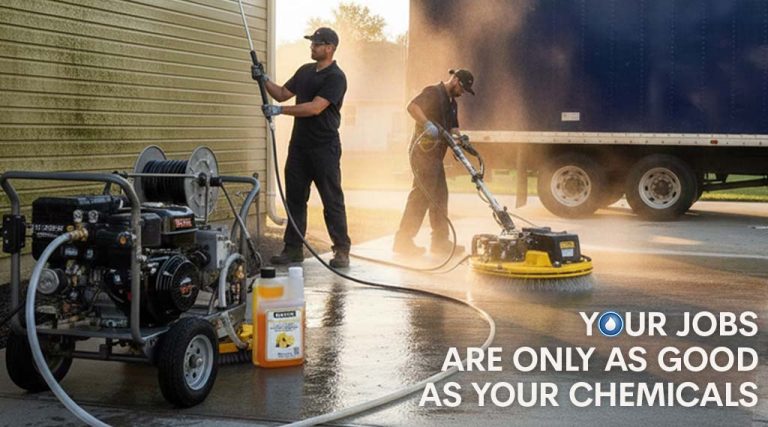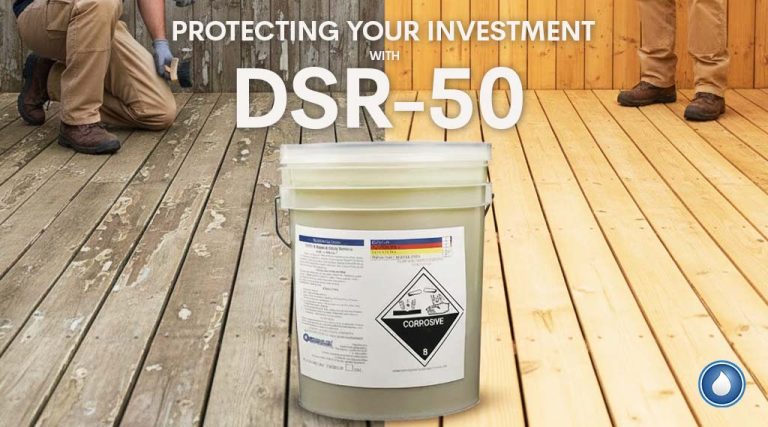- Home
- /
- Power Wash Basics
- /
- Pressure Wash Maintenance
Subscribe To Our Newsletter
Stay in the know on the latest products, deals, events, tips & tricks.
Social Media
Pressure Wash Maintenance
Engine Maintenance
You should always use the engine manufacturer’s suggestions as a minimum standard for maintaining your pressure washer. Consult your owner’s manual for specific information such as capacity, type, and viscosity. You should Always your oil prior to starting your engine. Check the oil daily, or after every 8 hours or more if recommended by manufacture. Most engine manufactures have a website where you can find this information if you misplaced your owners manual. If you require more information about an engine that is not listed contact the manufacturer of your pressure washer or the distributor from which you purchased the machine.
Air Filters
Carburetor air filters should be checked prior to each use. The engine should be equipped with a filter element and a pre-filter. These can be inspected by removing the air cleaner cover. This only takes a few seconds to do and can save you thousands of dollars in the long run. A visual inspection will tell the story. If upon inspection you find that it is dirty you should remove it and replace it with a clean one.
Prior to installing the new pre-filter you should check the filter element. You can proceed to spray the filter with WD_40 and wringing it out with a paper towel when installing it around the filter element. Be sure that the air filter cover is installed securely. Many people Forget this step and lose their cover. If operating in an extremely dusty environment you may need to check the filters more often. Carry spare pre-filters with you in case your on the road or an extremely dusty environment as a precaution. Pre-filters may be cleaned and re-used. You can wash them in warm soapy water, rinse them well, and thoroughly dry them before re-use.
Type of fuel to use
- Use clean fresh regular unleaded gasoline with a minimum octane of 87.
- Do not use gasoline that contains methanol.
- Do not mix oil with gasoline
Preventative Maintenance not mentioned
Your engine manual will advice you of the proper intervals for performing that maintenance procedures that must be done to keep your engine running smoothly for the expected life cycle of the pressure washer. Take this information seriously! The future of your business may depend on you taking proper care of your equipment.
Pump Maintenance
In the mobile power was industry the most common used pump is the positive displacement, triplex ceramic plunger pump. These pumps are manufactured by many different companies. However They all seem to agree on certain points. Some of those points are:
- A pump must be supplied with an amount of water equal to what you intend to discharge.
- The water supplied to the pump must be filtered to remove ant particles that might cause damage to the pump.
- The oil in the pump must be kept clean and free of moisture and other contaminants.
- Each pump has a pre-determined speed which it must turn in order to achive its intended performance, this must not be exceeded.
- Each pump has a maximum pressure rating, it must not be exceeded.
Pump Troubleshooting
*Aid with the most commonly found problems
| Problem | Cause | Action |
| The pressure is low, and the gun and hose are vibrating | Foreign material in the check Valves | Check and clean as needed |
| Damaged check valves or check valve “O” ring | Check and replace as needed | |
| Air bubbles in the pump inlet. | Find and repair inlet filter | |
| Insufficient water supply | Check water supply and inlet filter | |
| The pump surges when the trigger is released. | There is a high-pressure water leak | Check all high pressure fittings and the trigger gun also |
| Insufficient unloader-bypass restriction | Check for the proper restrictor or contact repair station | |
| The pump overheats | The oil level is low | Fill to the proper level with the correct oil |
| The machine has been running in bypass for a long period of time | Squeeze the trigger and shorten period of trigger release | |
| Hot water running through the pump | Lower the temp. of the water inlet | |
| The discharge water pressure is low. | The nozzle is worn or incorrectly used | Replace the nozzle with a correctly sized one. |
| The drive belts are loose | Tighten or replace belts as needed | |
| Insufficient water supply | Increase the water flow to the pump | |
| The v-packing is worn | Replace the v-packing | |
| The unloader valve is defective | Replace the unloader valve | |
| The engine is to slow | Determine the cause for this and have it repaired | |
| There is water dripping from under the pump | Cracked or broken ceramic plunger | Replace the plunger and repair the pump as needed |
| The plunger packing is worn | Replace packing | |
| There is water in the pump | The plunger packing is worn | Replace the packing and change the oil |
| Cracked ceramic plunger | Replace the plunger, repair the pump as needed, and change the oil | |
| The pump was subjected to a rainstorm or a direct blast of water from the washer | Drain and replace oil with what is recommended by the manufacturer |
Burner Troubleshooting
| Problem | Cause | Action |
| The burner will not start | The burner fuel tank is empty | Refill tank |
| The burner filter is clogged | Replace tank | |
| The burner motor isn’t running | Check power to the motor. If it is an AC motor push reset button. If the motor still doesn’t start, replace it | |
| No fuel after the solenoid | Check for the fuel solenoid. If no power is detected at the solenoid check pressure, flow, or vacuum switch for proper operation and replace as needed. | |
| No spark from the burner transformer or igniter | Replace the defective unit | |
| Spark at the igniter, but not at the electrode tips | Check electrode and burner gun settings and inspect insulators for cracks. Replace as needed | |
| The burner smokes | Contaminated burner fuel | Change fuel supply. if smoking stops drain the fuel tank and replace fuel |
| Soot laden heater coils | Remove heater coils for cleaning and replace insulation | |
| Elevated fuel pressure | This is usually the result of water damage inside the fuel pump. Replace the pump | |
| Worn or dirty fuel nozzle | Replace the fuel nozzle |
Share This Post
More To Explore
Winter Pressure Washing Maintenance Checklist
Winter Pressure Washing Maintenance Checklist Prepared for Contractors by PowerWash.com. Winter is the most important time of year to protect ...
2025 Tax Changes, New Rigs & Easy Payments: What Power Washing Pros Need to Know Before Dec 31
Updated for the latest federal guidelines. PowerWash.com does not provide tax advice. Always consult your CPA. As the year comes ...
Your Jobs Are Only as Good as Your Chemicals: Here Are the Ones That Stand Out
If your busy season has you running from job to job, you already know this: the equipment you use matters, ...
Stripping Wood the Smart Way (Not the Hard Way)
Deep Wood Restoration Made Simple with DSR-50 Whether you’re a professional deck and fence restoration contractor or a homeowner prepping ...




